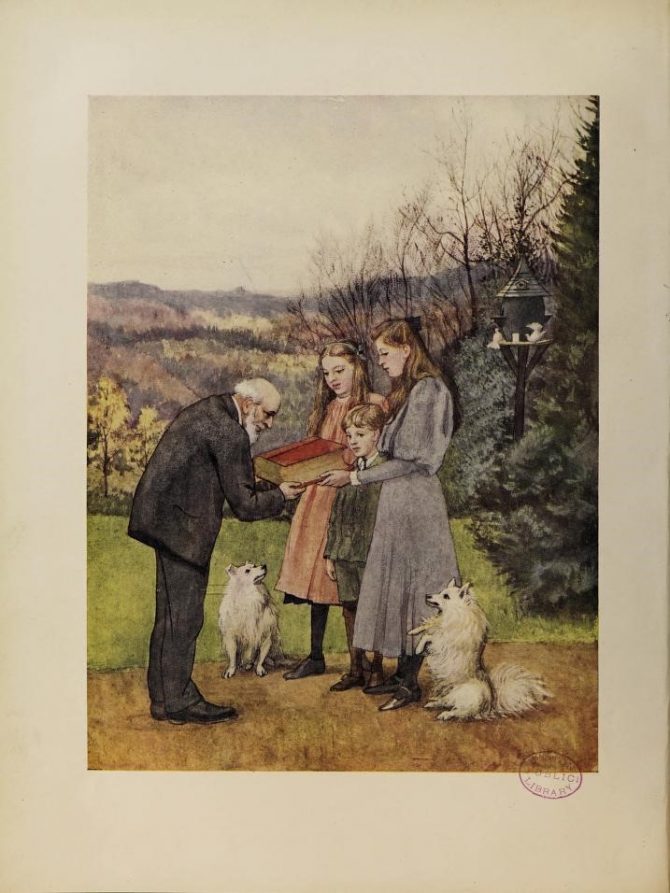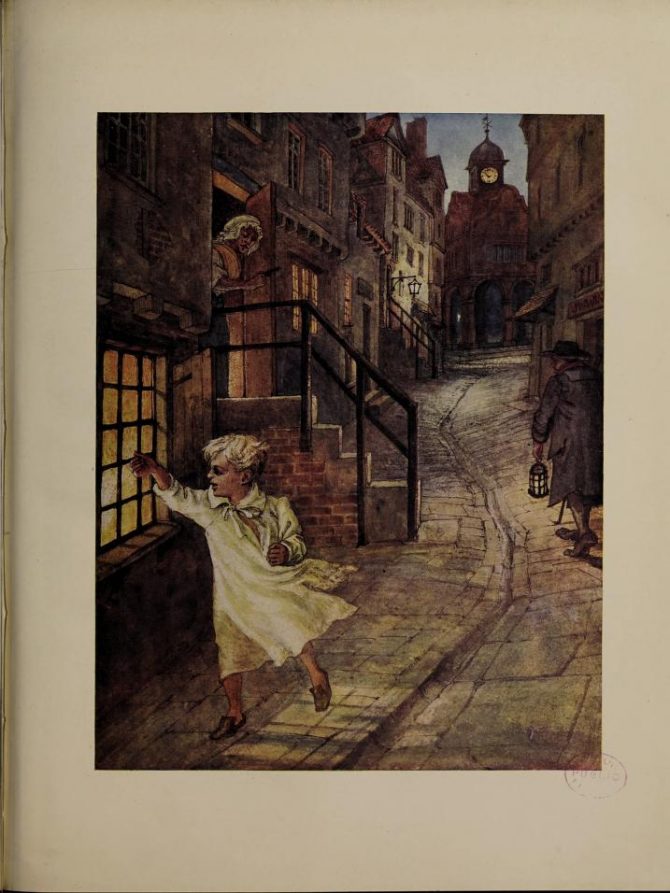This post is part of the Illustrated Songbooks series.
The second half of the 19th century and early part of the 20th century have been called the “golden age of children’s books." That extends to children’s songbooks, too. These songbooks may have music composed especially for that book, or may be already well-known nursery rhymes or folk songs. We recently digitized children’s songbooks from this golden age, and we invite you to take a look at them.
George James Howard, the 9th Earl of Carlisle wrote an introductory note to A Picture Song Book. “When I did the illustrations for these Songs in the country for the amusement of my grandchildren, I had no idea that they would be reproduced or published. I hope that this may be considered as an extenuating circumstance.” He is presenting the book to his grandchildren in the illustration facing the title page.
Until 1889 when he became the 9th Earl of Carlisle, this artist used the name George Howard. His family pictured a political career for him, but he found that the life of an artist was more to his liking. He studied art seriously, and his oil paintings and watercolors are found in several major museums and in private collections. Even with that experience and reputation, he is considered to be an amateur painter. His work has been associated with the Pre-Raphaelite Brotherhood. He was a patron and friend to many in that group, particularly Edward Burne-Jones.
The songs in this collection are primarily English in origin, often described as traditional or old ballads. Many readers will already be familiar with the two Christmas carols found here: “Good King Wenceslas” and “The Holly and the Ivy.” Some others may be only familiar as nursery rhymes, such as with “Wee Willie Winkie” and “Tom, the Piper’s Son.”




Add a comment to: Illustrated Songbooks, Part 1